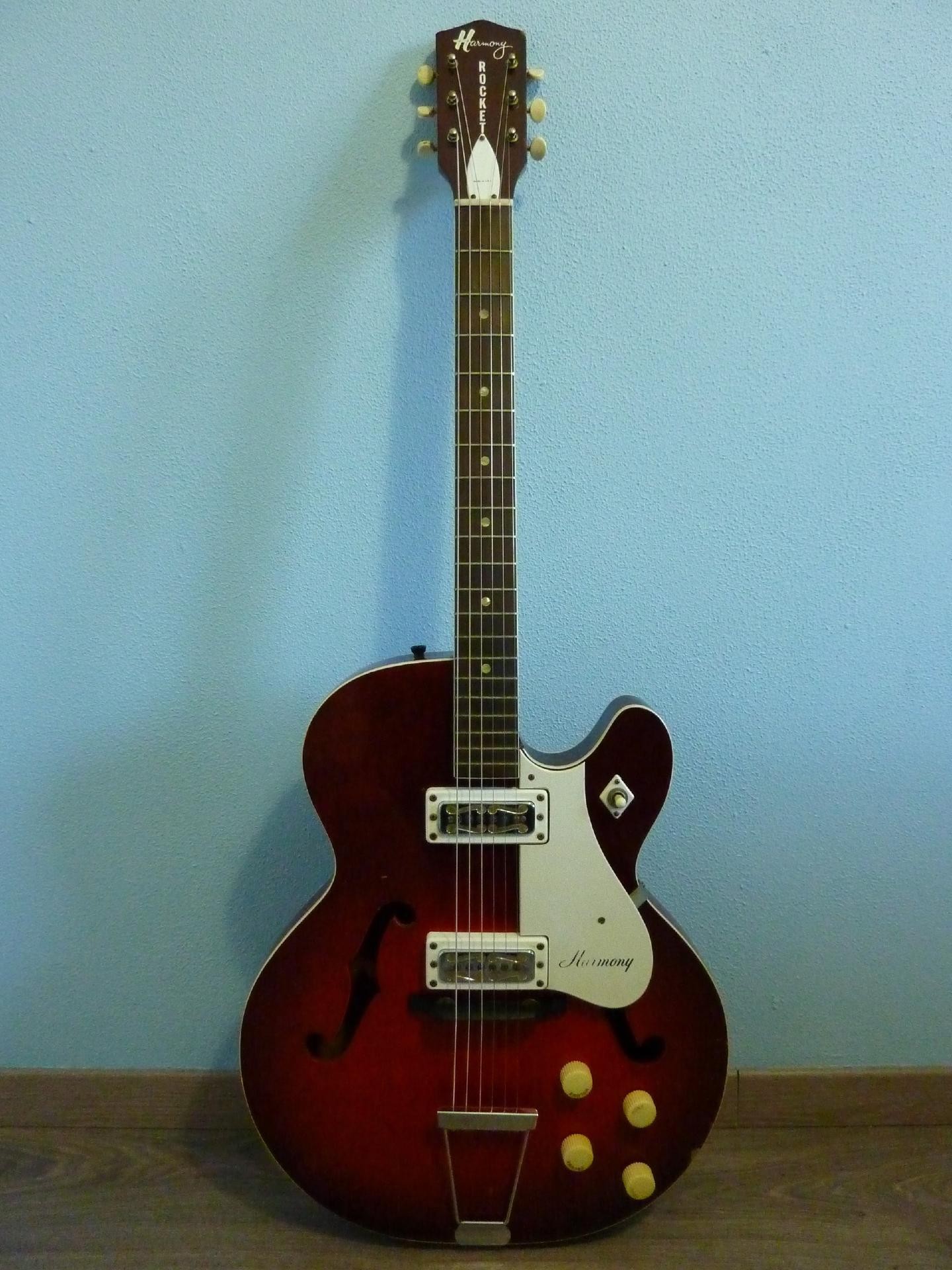

Our review guitar’s factory setup isn’t technically perfect in the sense that there’s zero neck relief, but that doesn’t have any noticeable effect on playability. How’s Harmony’s quality control? Pretty good, although a microscopic inspection reveals some minor binding flaws at the neck join and, peering inside the upper f-hole, a small cascade of squeezed-out glue on the side of the centre block. Given that so many of us are doing most of our playing in a seated position at the moment, the arrival of a semi-hollow instrument with such snug proportions couldn’t be better timed. At well under 3kg it’s not going to exacerbate anyone’s back problems, and the diddy dimensions mean smaller players should find it much less unwieldy than the average thinline semi. This is the kind of guitar you pull out of the case and wonder for a moment what happened to the rest of it. Sweet spot: pull the cupcake volume knob up to knock the pickups out of phase In use But if you think that’s going to influence this review, you’re wrong and we’re very disappointed in you.
#HARMONY GUITARS FULL#
We won’t judge you if you don’t think blue is the prettiest option, but we will really, because it is.īefore we tuck in, full disclosure: the Harmony brand is owned by BandLab Technologies, and so is. This being a semi rather than a solid, there’s a different feel to the choice of finishes available: no Champagne or Pearl White here, just classic Sunburst, Trans Red or the gently sparkling Midnight Blue of our review sample.
#HARMONY GUITARS SERIES#
The ‘cupcake’ volume and tone controls of the other Standard Series models are present, thank goodness, alongside a strangely tall pickup switch Peter Green fans take note, you can pull up the volume knob to knock the pickups out of phase in the middle position.

What we do know is that they’re designed to recreate the clarity and touch dynamics of the original DeArmond single-coil gold foils, but using modern techniques and parts – and twin coils.īoard games: the Comet features a 12-inch radius ebony fingerboard

Harmony describes these pickups as ‘custom gold foil humbuckers’… and there’s not much more we can tell you than that because it’s all top secret – they wouldn’t even tell us what the magnets are made of. It’s also worth noting that the top is carved, not pressed like the usual maple laminates. Perhaps the most interesting is Harmony’s choice of timber, because there’s no maple at all in this guitar: the top, back, centre block and neck are all mahogany, with an ebony fingerboard. Tragically there’s no Bigsby option – yet.Īll of this is taking us very much in the direction of the ES-339 recipe, but there are key differences. The hardware has also been upgraded: the tuners are locking types, as we’ve seen on the new Harmony solidbodies, and at the other end we find a tune-o-matic bridge and stop tailpiece. The basic double-cut outline is true to the template, as is the six-in-line headstock but the Comet has a solid centre block, unlike the fully hollow H72, along with a set neck instead of the original’s bolt-on construction. Refine and dandy: like Harmony’s new solidbodies, the Comet boasts locking tuners What it doesn’t have is an awful lot in common with the instrument that inspired it – which, considering the cheap and cheerful reputation this catalogue brand used to have, might be just as well. It’s a small guitar, something like a Gibson ES-339 in body dimensions, and it really is quite the cutey. This is the Comet, based on the H72 model of the late 1960s. So far the Standard Series has lived up to that promise but now it’s time to crank things up a notch with the first semi-hollow guitar of the new Harmony era. READ MORE: Review: Harmony Standard Series Silhouette.The idea for these new guitars, built in Kalamazoo, Michigan, was to combine the pawnshop charm of the originals with the solid playability of modern American build quality. A little over three years ago, the rebirth of Harmony – one of the great ‘minor league’ guitar brands of the 1950s and 60s and once the USA’s largest musical instrument manufacturer – was announced.


 0 kommentar(er)
0 kommentar(er)
